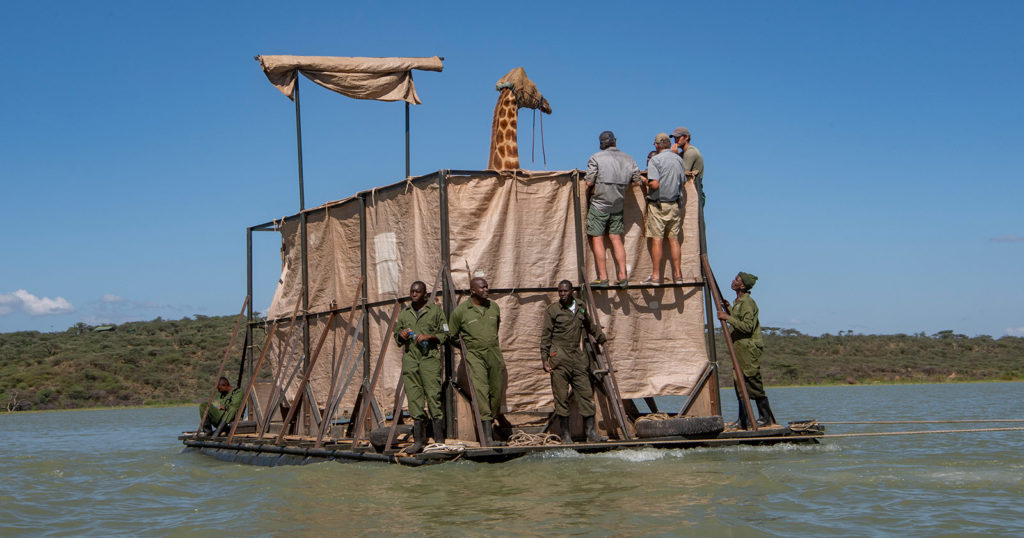Asiwa the giraffe is ferried off a flooded island in Kenya. She was blindfolded to keep her calm during the trip.
Time was running out for Asiwa, a Rothschild’s giraffe in western Kenya.
For years, she and seven other giraffes had been living on a peninsula that reached out into Lake Baringo. But rising lake levels, caused by relentless rain, had gradually turned the peninsula into an island, leaving the animals stranded.
It was especially grim for Asiwa, who was stuck on a marshy part of the island, separated from the other giraffes with only about an acre of land to forage for food. And the flooding was only getting worse.
She needed to be rescued.
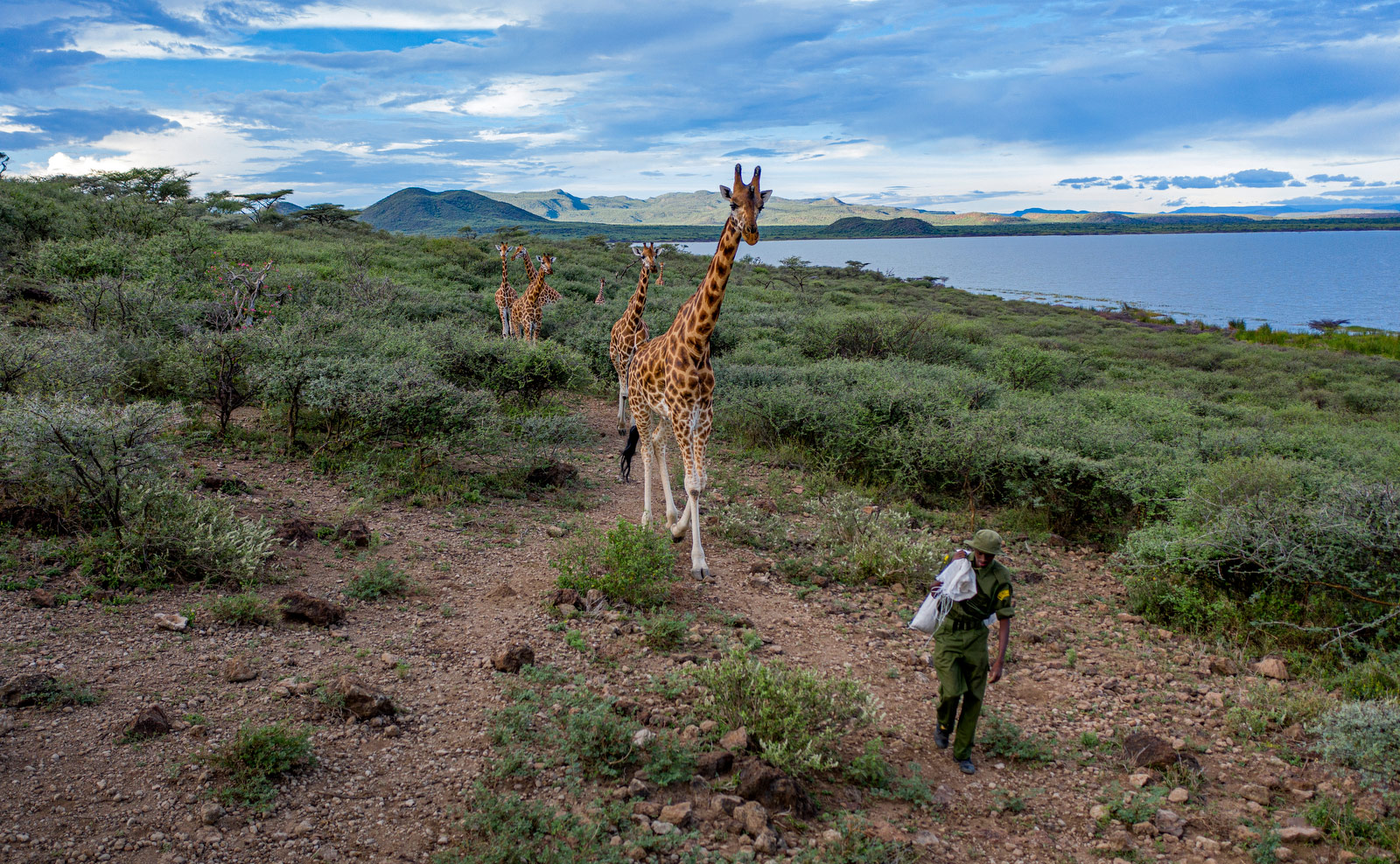
Mike Parkei, a ranger for the Ruko Conservancy, looks after the eight giraffes stranded on an island in Kenya.
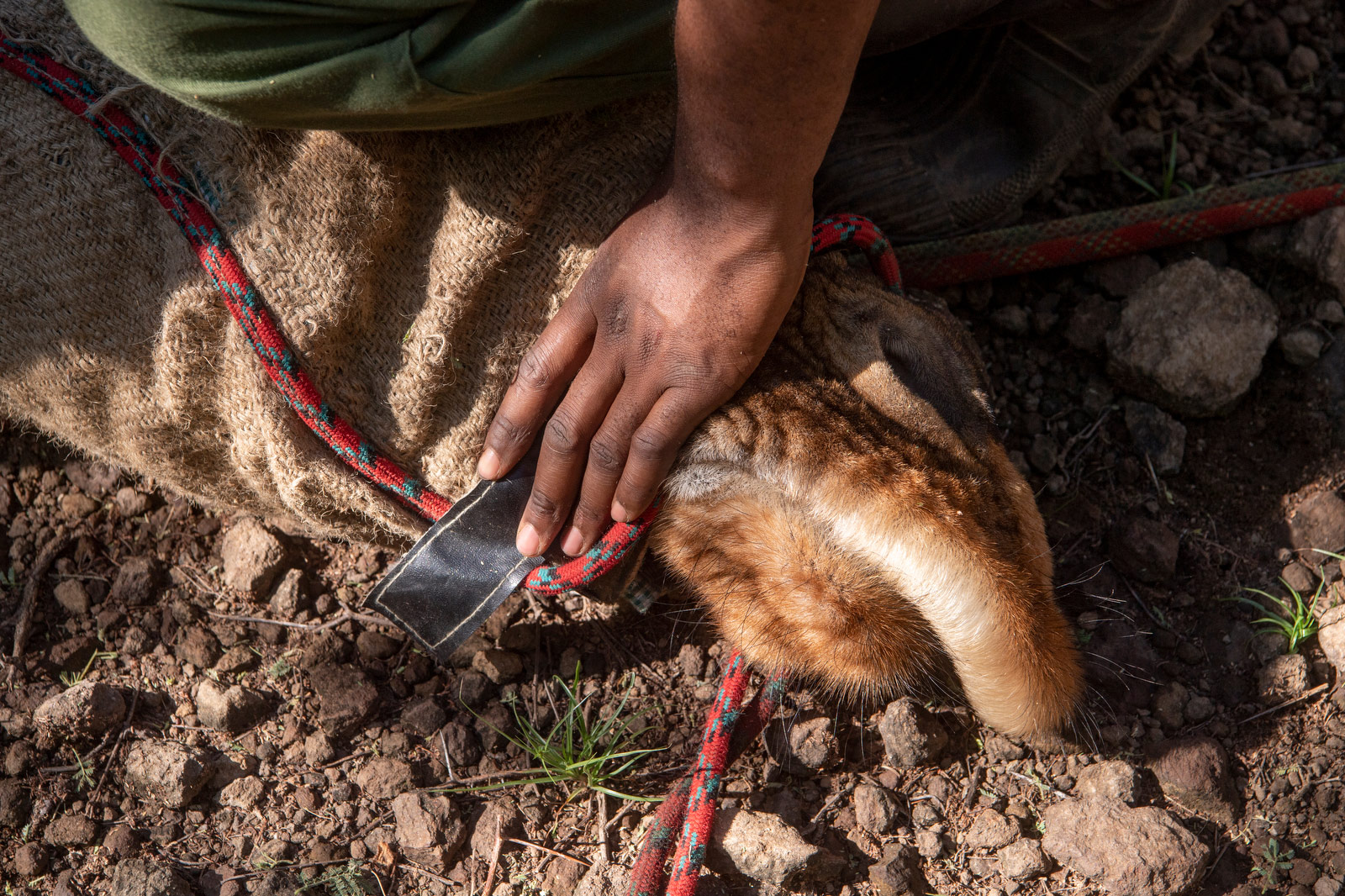
Asiwa is attended to after being hit with a tranquilizer dart on the day of her rescue. She was not hurt; she just had to be sedated before being guided to the barge.
Conservationists have teamed up with Kenyan wildlife authorities and local members of the community to start moving the giraffes off the island and into a new sanctuary within the 44,000-acre Ruko Conservancy.
Asiwa was the first to be ferried to safety last week, taking about an hourlong ride on a custom-made steel barge. A second giraffe, Pasaka, was rescued the day after Asiwa.
But it’s not so easy to move these gentle giants.
“They don’t know that you’re trying to help them,” said David O’Connor, the president of Save Giraffes Now who has been actively participating in the rescue efforts. “They think you’re a predator. So they’re really trying to work against you, which makes it even harder.”
The initial hope, O’Connor said, was that they’d be able to coax the giraffes onto the barge by putting mangoes and other treats there. But because of the rainy season, there’s been an abundance of food on the island. The treats would not be enough.
That meant the giraffes would have to be hit with a tranquilizer dart — and that is an especially dangerous proposition because of their anatomy. O’Connor said that when giraffes go down on the ground, they can choke on their own saliva, or their brains can be damaged by the changes in blood pressure. So it’s important that once the giraffe falls, a vet is there to immediately counteract the drug with a reversal drug.
“It’s not like an elephant or a rhino where you just dart it, it flops over and it’s fine,” he said. “The giraffes, they’re kind of like a Formula One car. You can’t mess with their innards too much or they really have problems.”
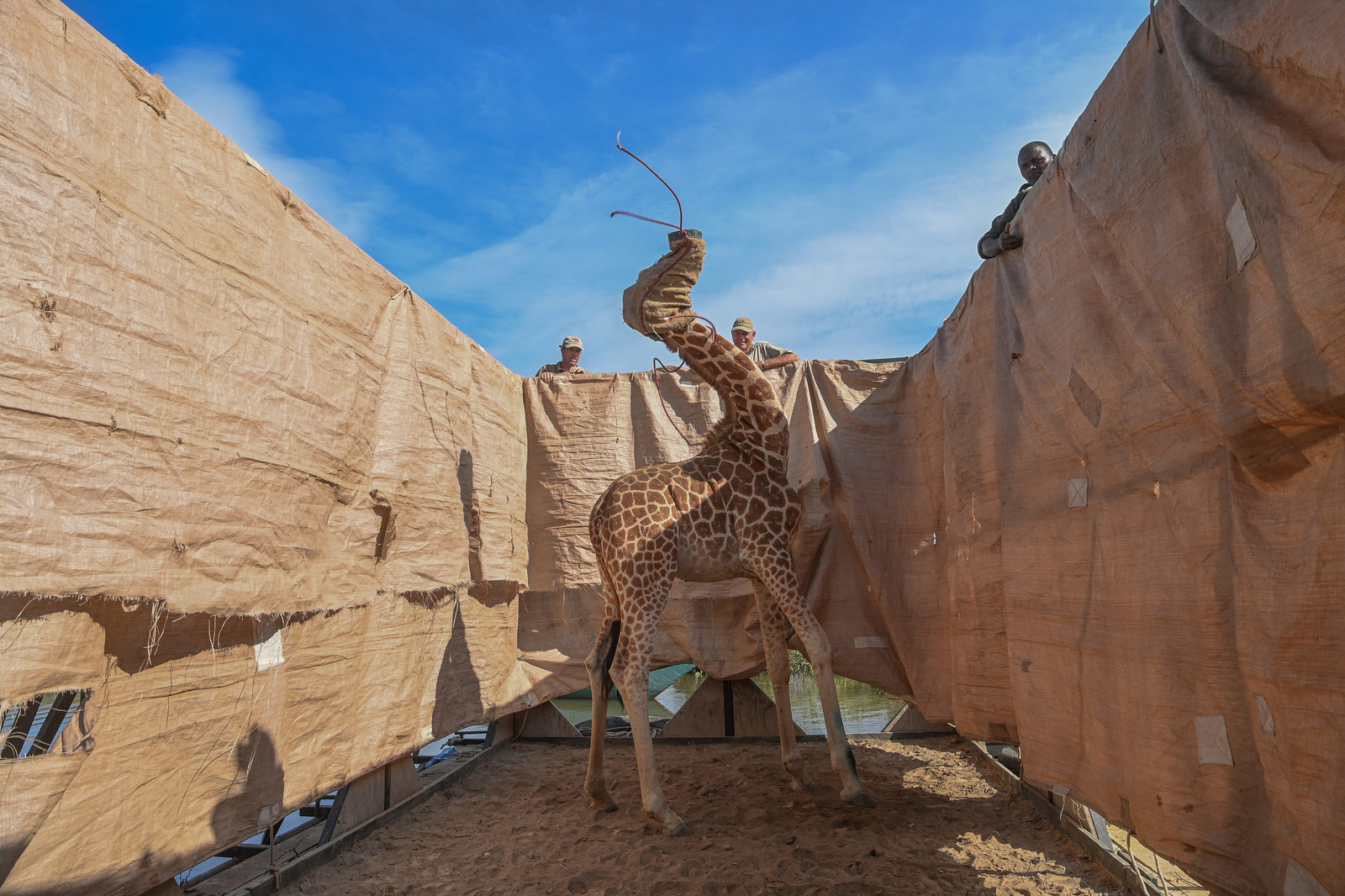
Pasaka, a younger giraffe, was rescued a day after Asiwa.
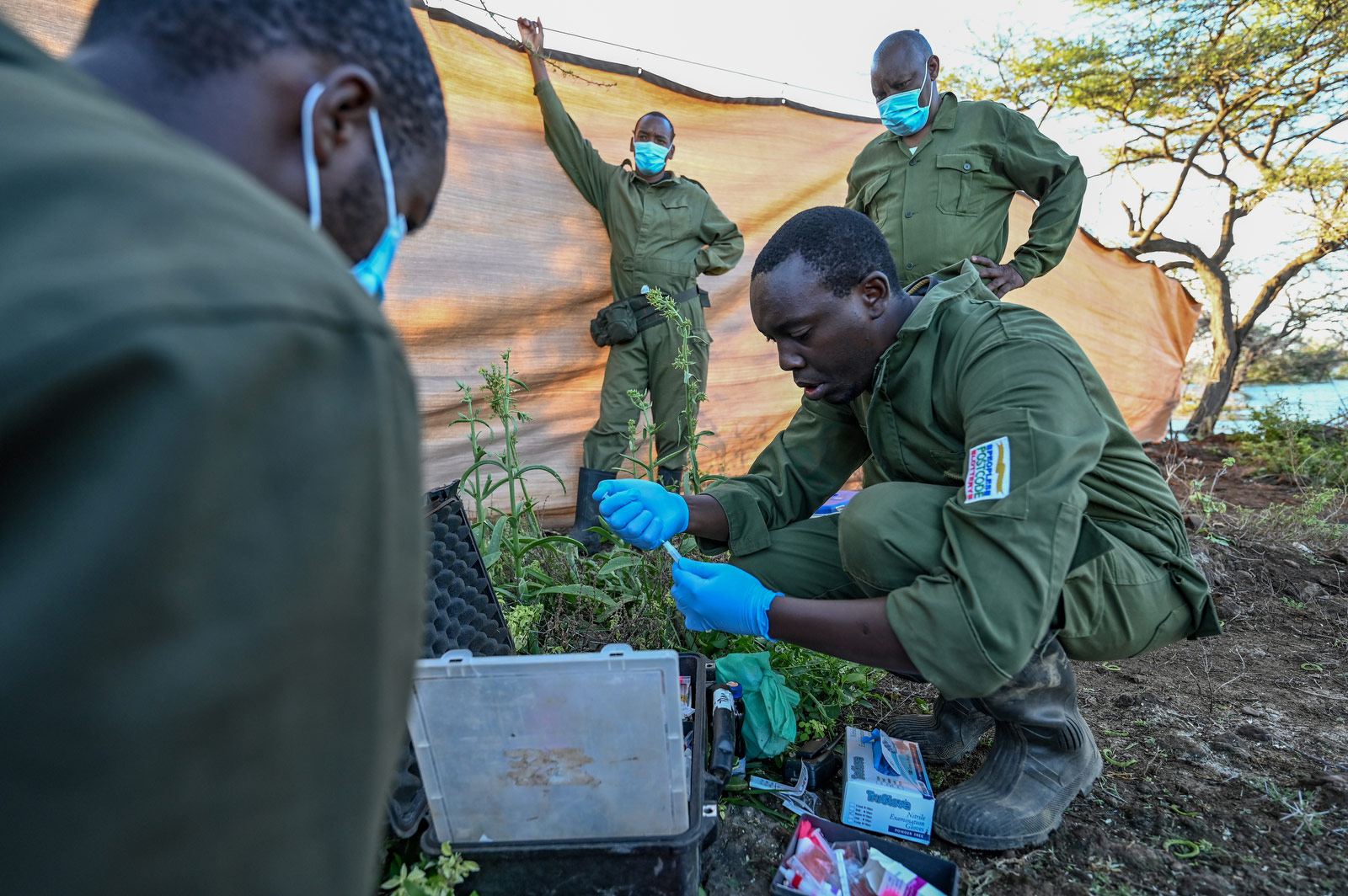
The rescue mission was a collaborative effort involving the Kenya Wildlife Service, local community members, and conservationists with Save Giraffes Now and the Northern Rangelands Trust.
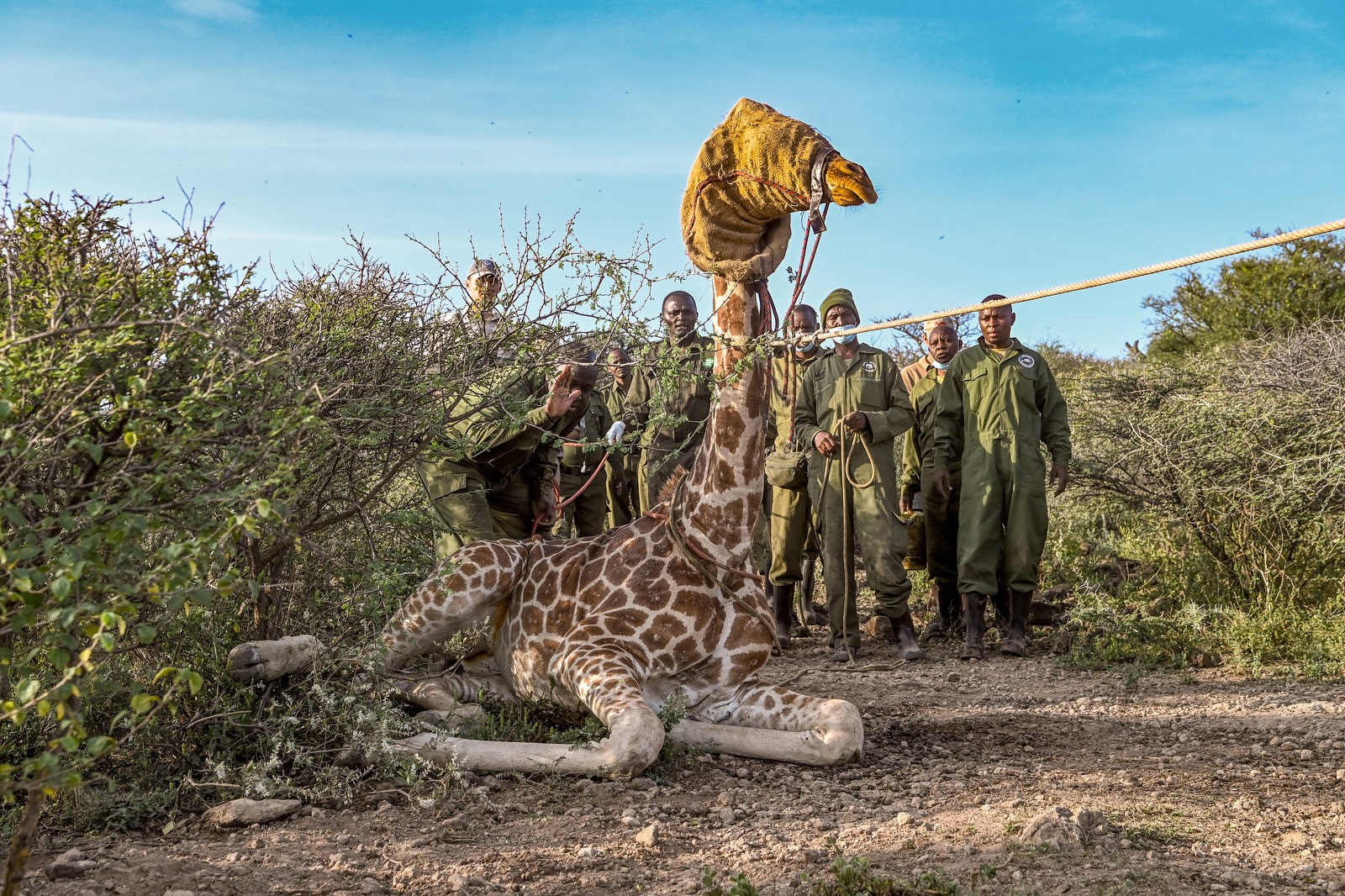
Rescuers keep a close eye on Pasaka before helping her to the barge.
Asiwa went down in thick acacia brush, probably as far away from the barge as possible. But the team was there immediately to attend to her needs.
They put guide ropes around her shoulders and a blindfold over her eyes to keep her calm.
“She was incredible,” O’Connor said. “She’s a very, very tough girl. … Once we got her onto a more open space where there was an established track, she just walked straight onto the barge. Sometimes it looked like someone was walking a puppy on a Sunday afternoon. It was amazing.”
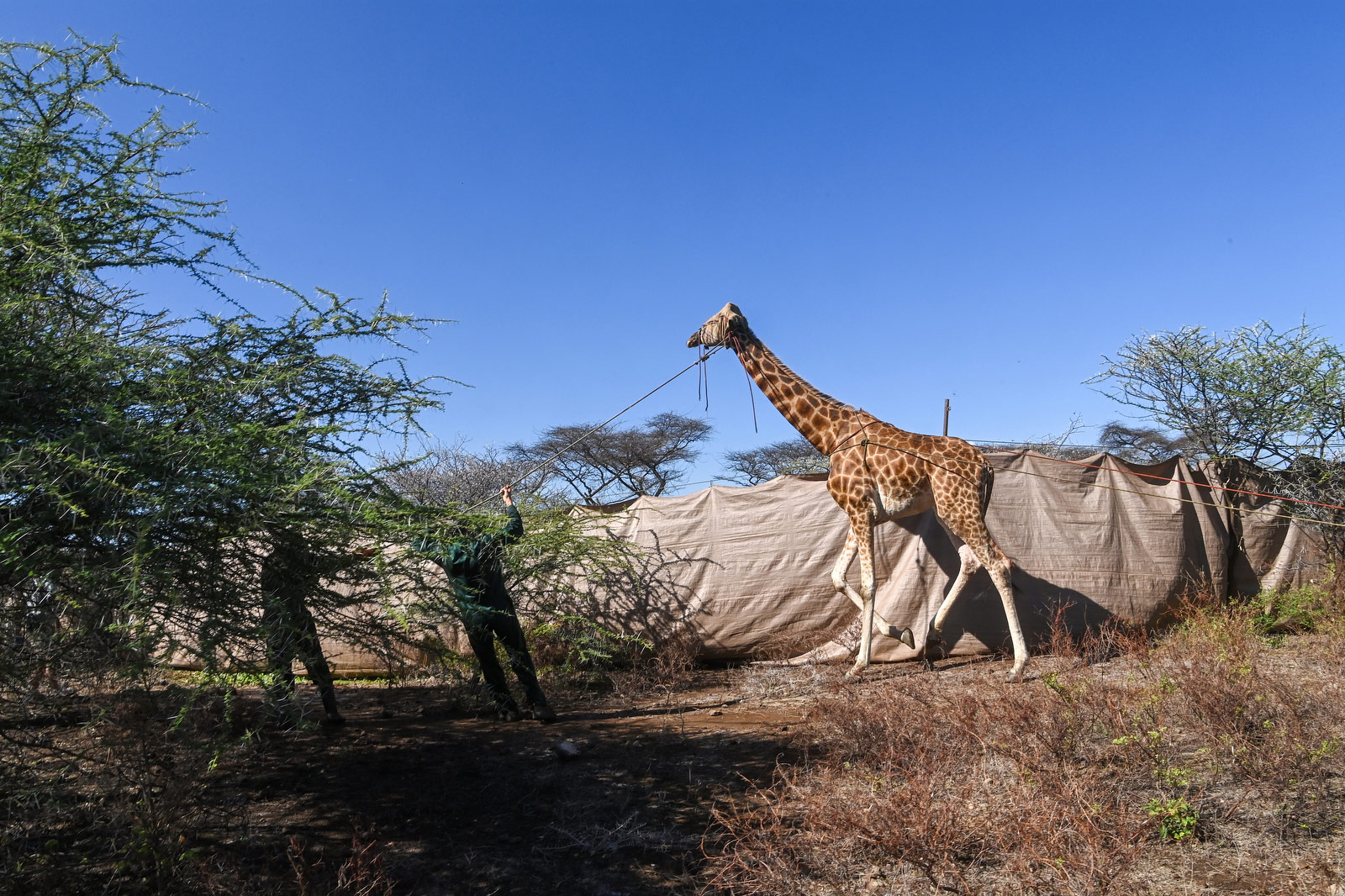
Asiwa is guided to a waiting barge.
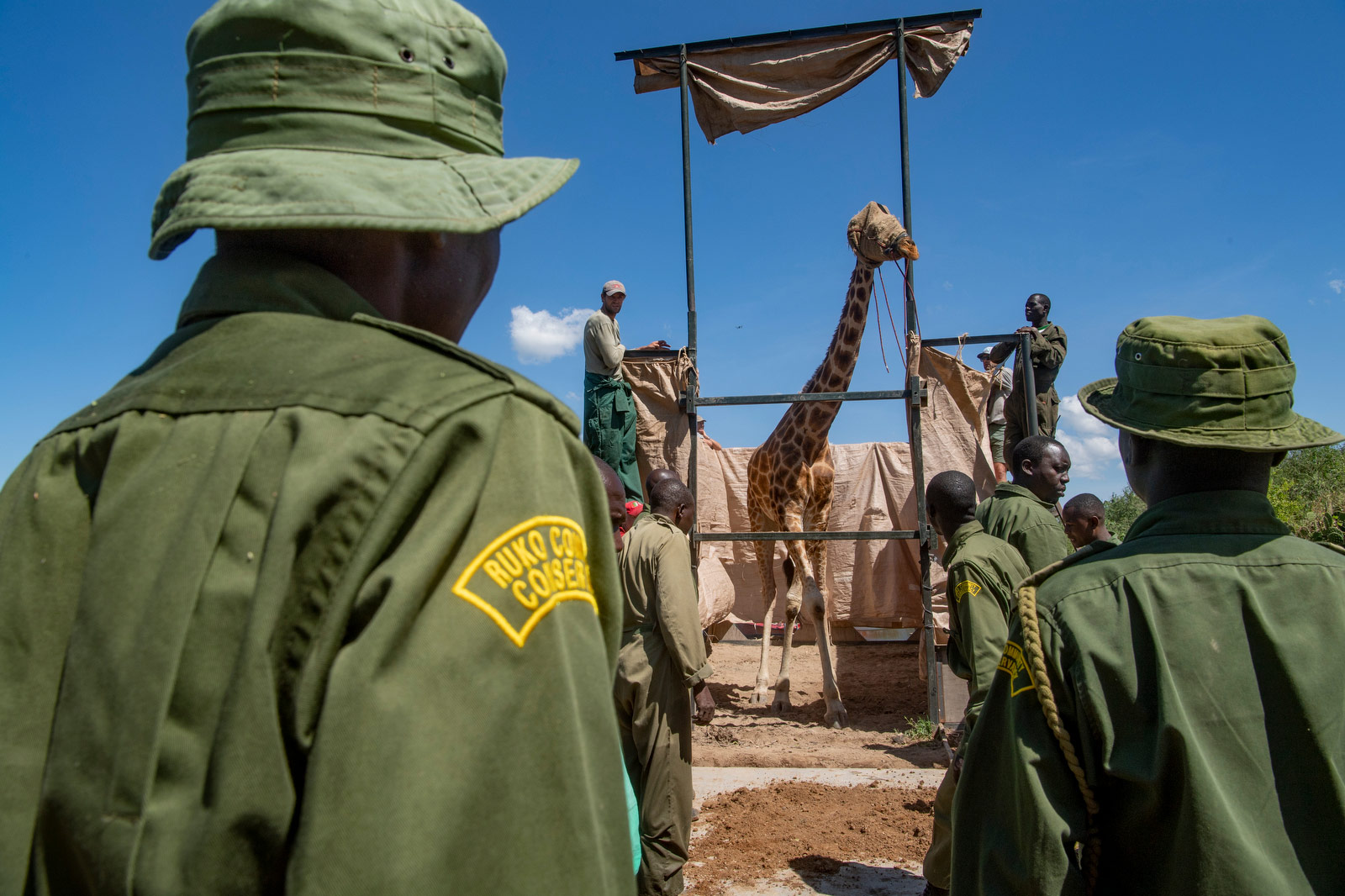
The rescued giraffes are being moved to a new sanctuary at the Ruko Conservancy, where they will be protected from poachers and predators.
It was smooth sailing on the barge, with Asiwa’s head poking over the high walls. She still had her blindfold on, and socks were put in her ears to block out sound.
She was surrounded by O’Connor and the other rescue workers, who kept their voices low and focused intently on the job at hand.
“Although it got all our hearts pounding at the beginning of the sedation, at the end of it, it was absolutely perfect,” he said. “And Asiwa was absolutely wonderful on the barge ride over. I think she was built for the sea.”
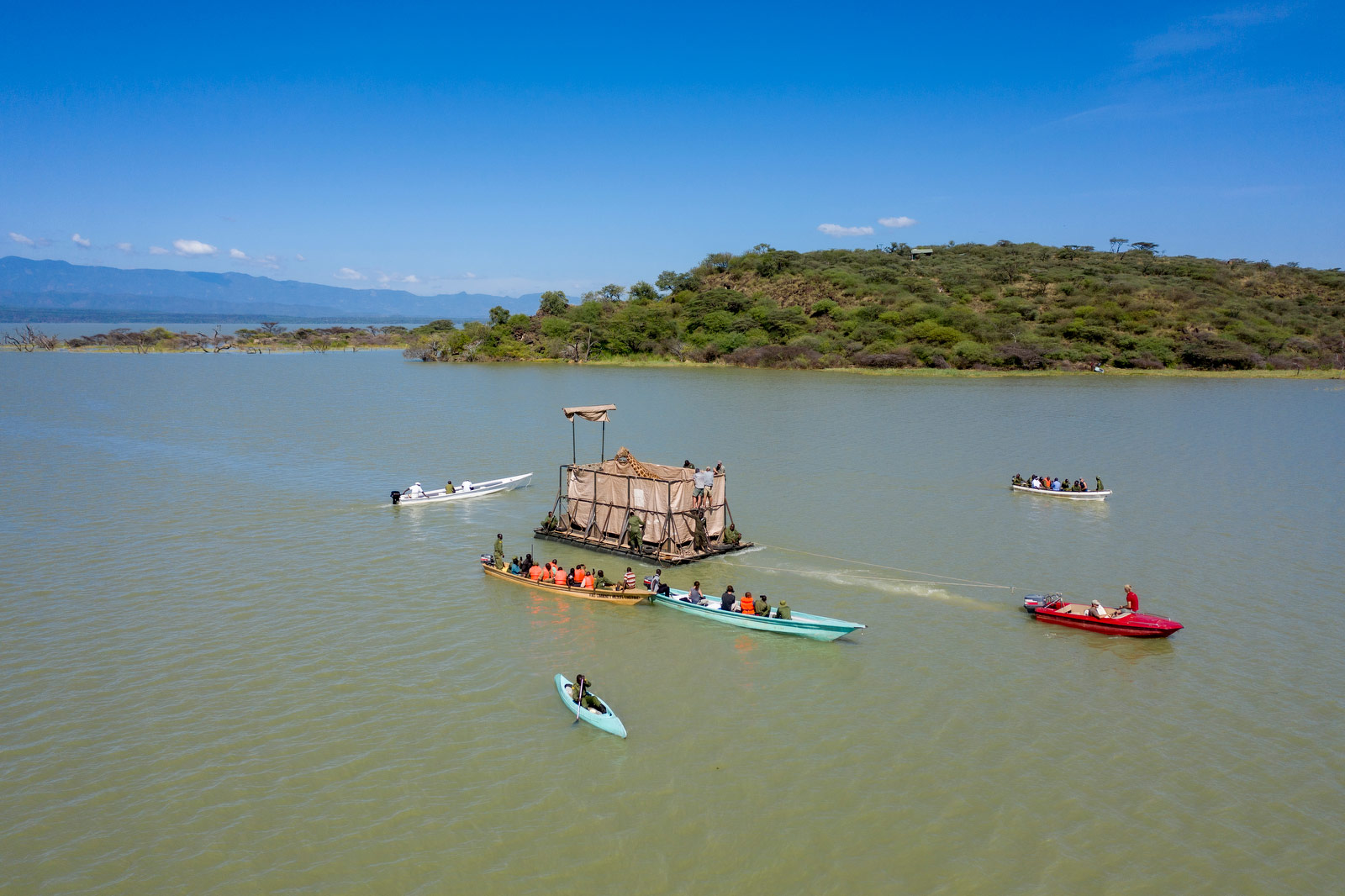
Boats surround Asiwa’s barge on the day of her rescue.
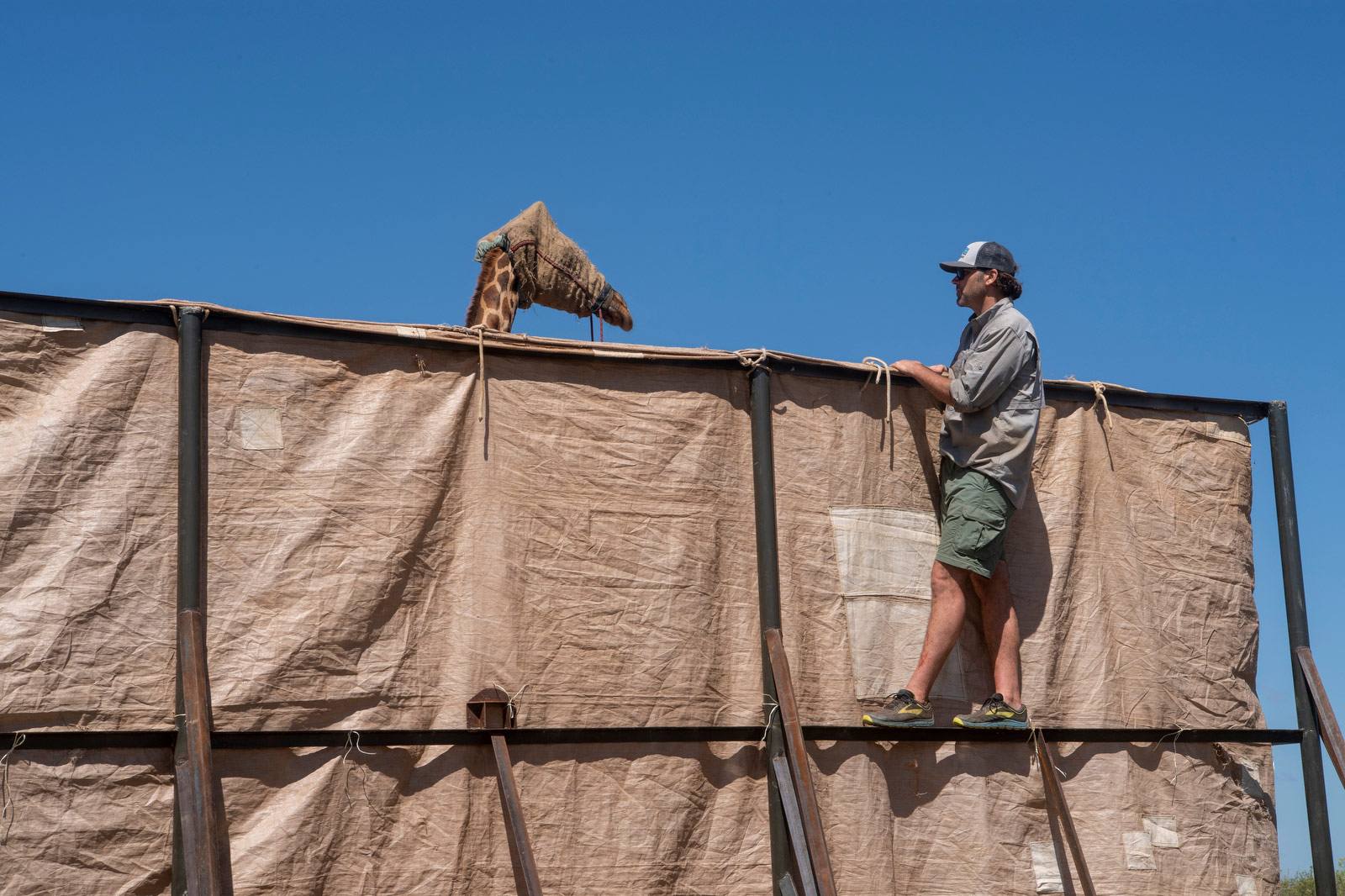
David O’Connor, the president of Save Giraffes Now, keeps an eye on Asiwa.
Photographer Ami Vitale documented Asiwa’s rescue mission and was there once the barge reached the mainland.
“The wonderful part was watching her gently amble off the boat once the blindfold was released as if nothing had happened,” Vitale said. “It really was a scene that could have been biblical.”
There was a celebration at the Ruko Conservancy, which was formed in 2006 by two formerly warring communities.
“The plan was to make the giraffe a symbol of unity and peace to end their long-standing conflict,” said Vitale, a National Geographic photographer whose work often reminds us of how our fate is intertwined with the fate of other species.
Since she started documenting a story about one of the world’s last white rhinos in 2009, Vitale has focused on wildlife and conservation efforts. Her latest book shows how China is trying to save pandas from extinction.
“My hope is that these images can inspire people and remind them that this is the only home we have,” she said. “We have poked some big holes in our shared little life raft. What happens next is in all of our hands.”
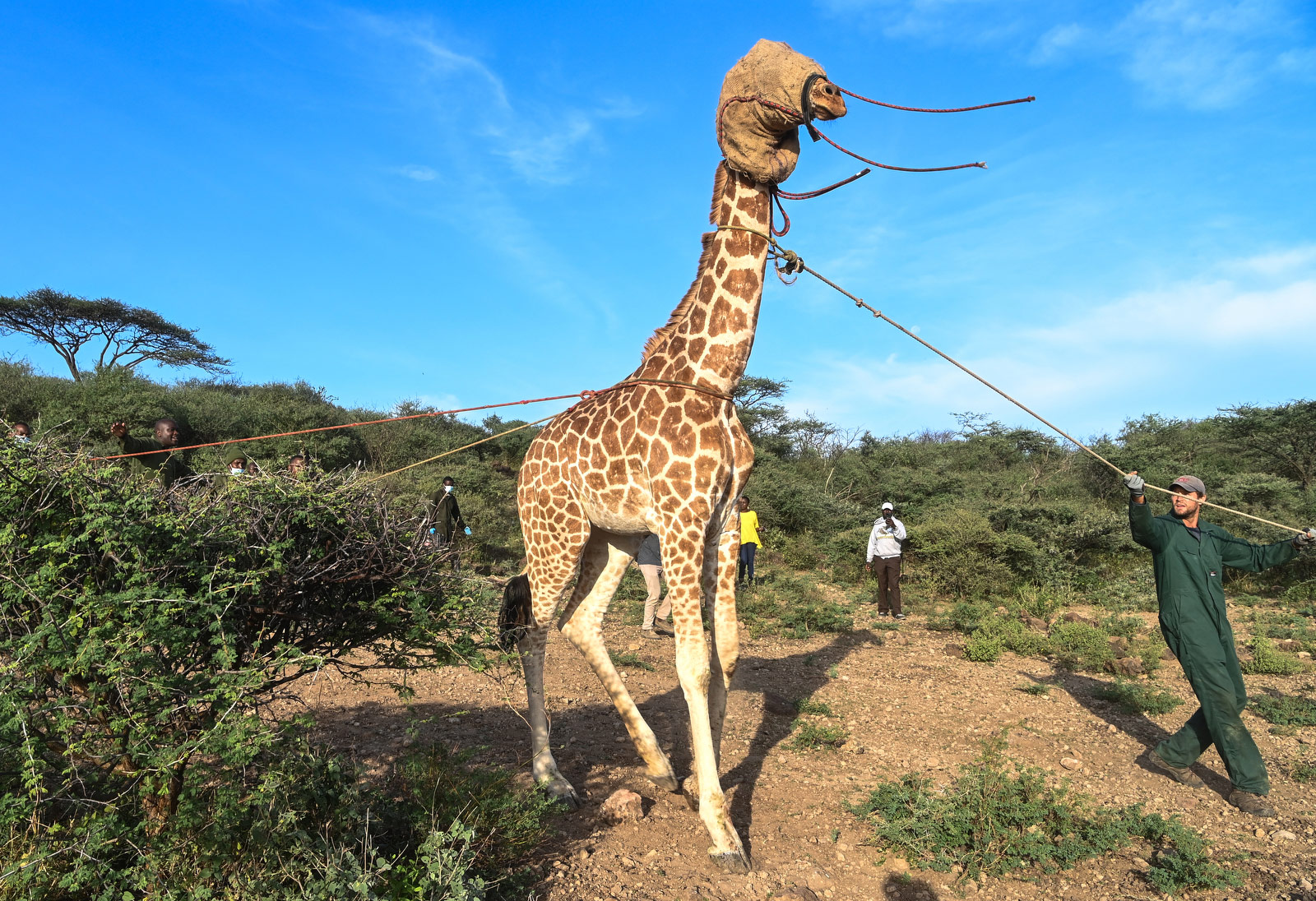
Pasaka was the second of eight planned rescues.
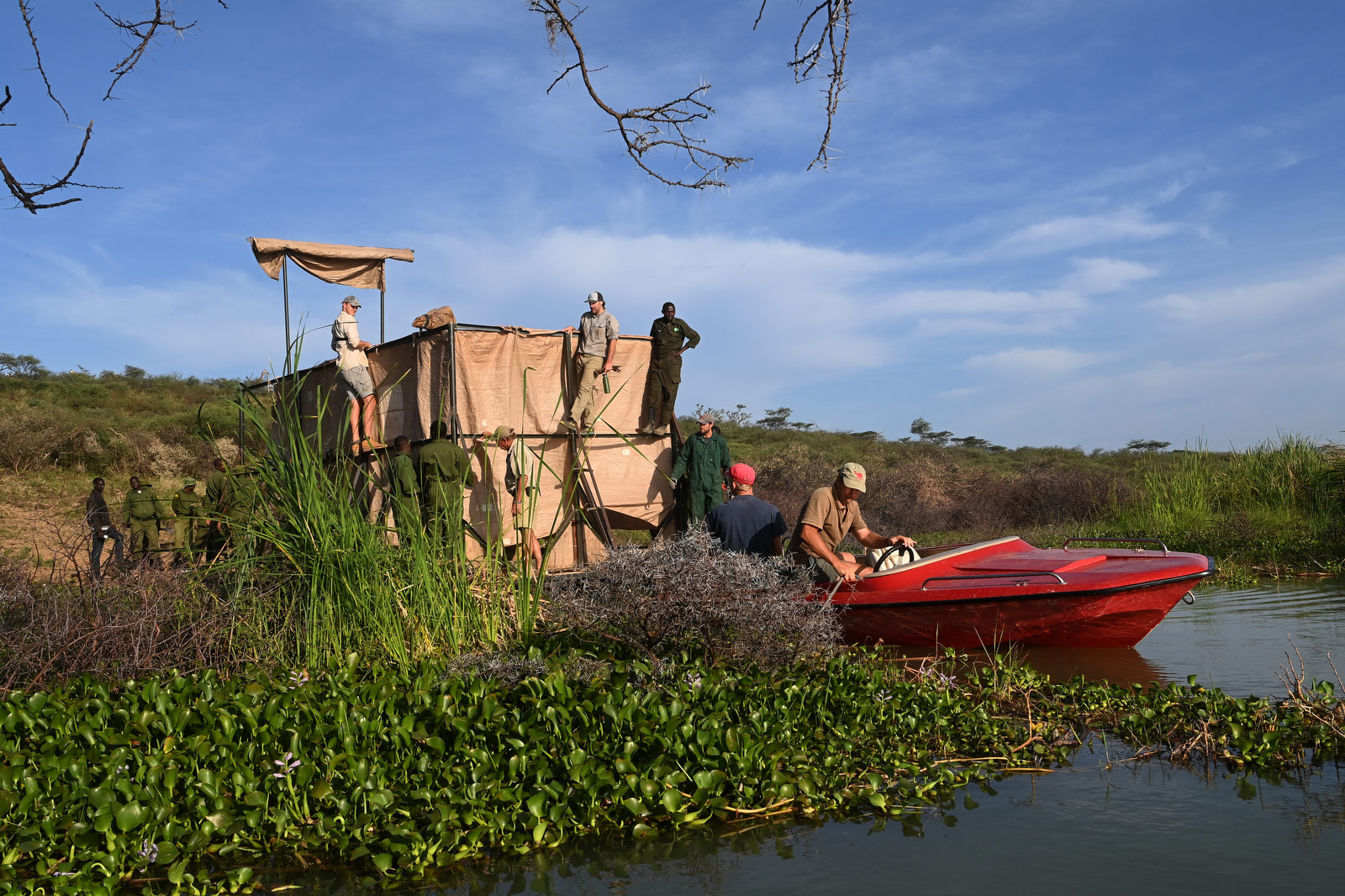
Rescuers move Pasaka to safety.
Six giraffes still remain on the flooded island in Kenya, but the plan is to save them by the end of January.
The Rothchild’s giraffe is an endangered subspecies. Because of poaching and habitat loss, only about 2,000 of them remain in Africa — 800 in Kenya — according to O’Connor.
“The hope is that this is just the first step of reintroducing these giraffes back to their historical home across the Western Rift Valley, hopefully over the next 20-30 years,” he said.
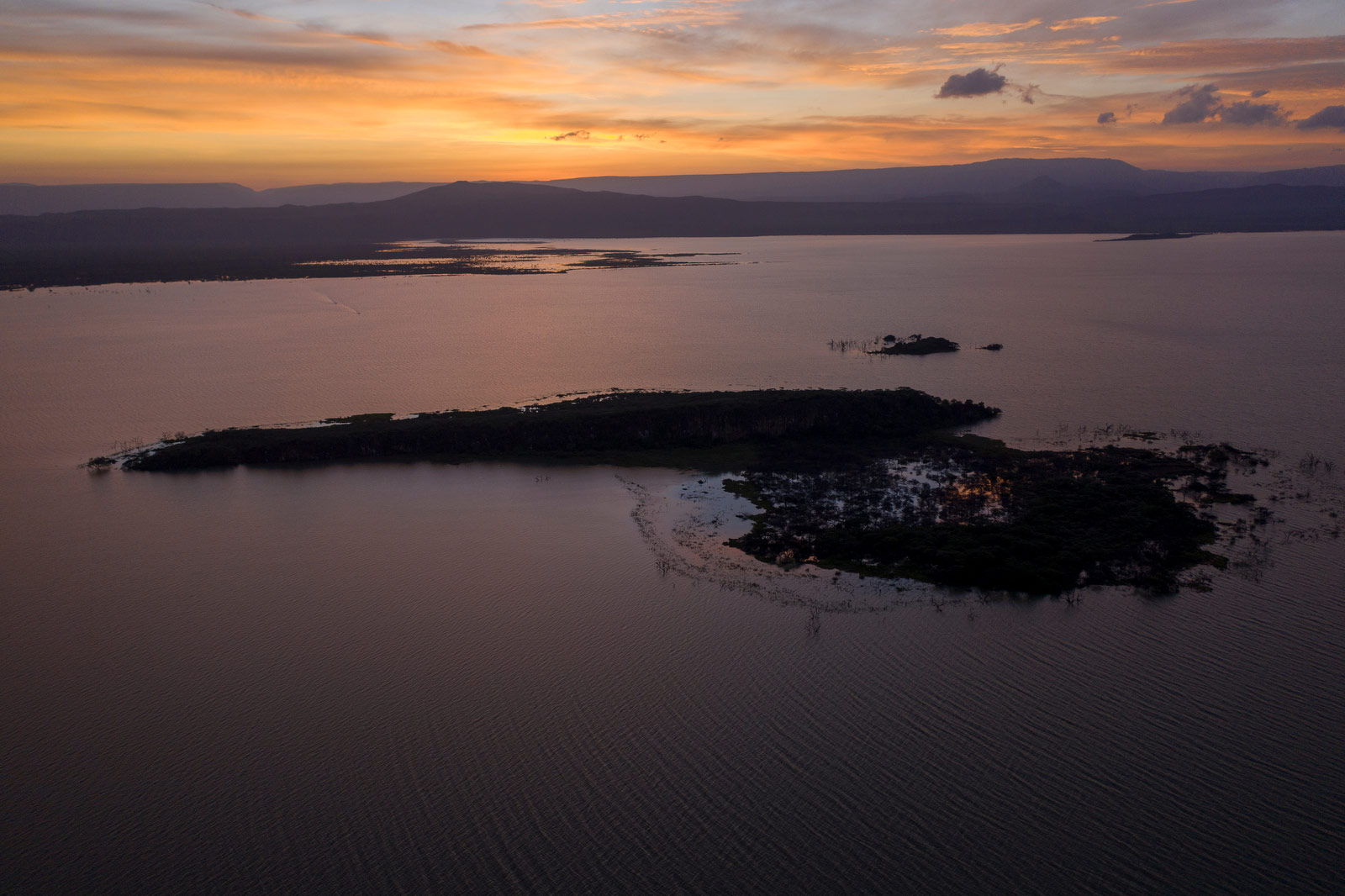
An aerial view of the flooded island that the giraffes have been stranded on.
Ami Vitale is a National Geographic photographer based in Montana. Follow her on Facebook, Instagram and Twitter.
Photo editors: Brett Roegiers and Cody McCloy
You may also like
-
UK coronavirus variant has been reported in 86 countries, WHO says
-
NASA technology can help save whale sharks says Australian marine biologist and ECOCEAN founder, Brad Norman
-
California Twentynine Palms: Explosives are missing from the nation’s largest Marine Corps base and an investigation is underway
-
Trump unhappy with his impeachment attorney’s performance, sources say
-
Lunar New Year 2021: Ushering in the Year of the Ox

